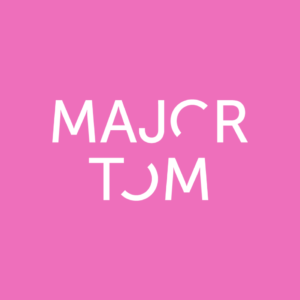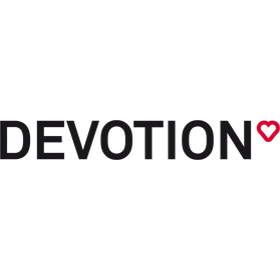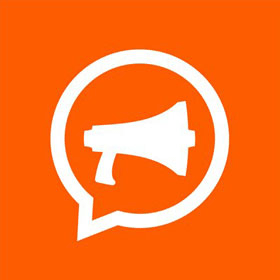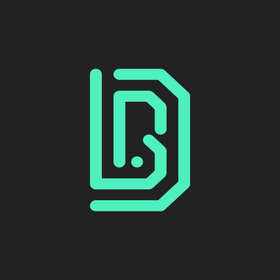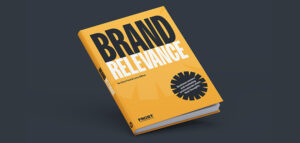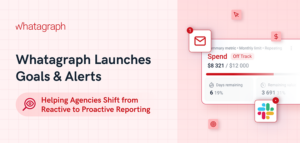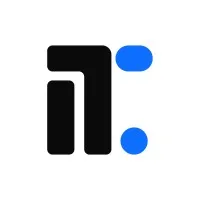
AI Automation Pricing Explained: Get Started Smartly
AI automation is no longer optional—but how much should it actually cost?
With 88% of marketers already integrating AI into their daily workflows and reporting up to 40% gains in advertising performance, both agencies and brands are facing the same critical question: what’s a fair, effective pricing structure for AI automation?
For agencies building their own AI automation service lines, pricing decisions impact profitability and client retention. For brands, understanding those cost structures is key to budgeting confidently and avoiding overpaying for underdelivered solutions.
In this guide, we unpack current AI automation agency pricing models (from flat project fees to ongoing retainers) and explain what’s typically included at each level. The goal is simple: help you align costs with real business value, whether you’re setting the price or paying it.
What’s Inside
- Understanding AI Automation Pricing in 2025
- How Much Do AI Automation Services Cost?
- AI Automation Agency Pricing Models Explained
- What’s Included in AI Automation Agency Pricing Packages?
- AI Automation Pricing by Business Size & Need
- FAQ about AI Automation Pricing
Understanding AI Automation Pricing in 2025
AI automation pricing in 2025 reflects the increasing sophistication of artificial intelligence and its deeper integration into everyday business functions.
As organizations continue to adopt AI-powered tools for customer service, data analysis, and workflow optimization, pricing is no longer just about software. It’s about the value delivered through outcomes.
At the core of AI automation pricing is the scope of functionality. Services that handle multi-step processes, such as CRM management, predictive forecasting, or end-to-end content generation require more complex configurations than tools handling singular, repetitive tasks. The broader the functionality, the higher the technical and operational requirements, which are directly reflected in cost.
Another key factor is integration complexity. AI tools often need to connect with existing software systems, whether it’s syncing with a cloud-based ERP or importing data from sales and marketing platforms.
When you start an AI automation agency, the cost associated with these integrations depends on the degree of customization or standardization of the connections. Off-the-shelf connectors reduce setup time, while custom APIs or security protocols increase implementation demands.
Data readiness also plays a central role. AI systems require clean, structured, and relevant datasets to function optimally. If a company’s data infrastructure needs preparation, such as cleansing, labeling, or transformation, that labor becomes a part of the pricing. Moreover, solutions that rely on proprietary or real-time data streams often require ongoing support and infrastructure resources, which further affects pricing.
Additionally, performance expectations influence how AI pricing is scoped. Businesses seeking high reliability, low latency, or real-time decision-making typically incur higher costs due to the computing resources and architecture required. These performance benchmarks are common in AI solutions tied to mission-critical operations such as fraud detection, programmatic bidding, or real-time personalization engines.
How Much Do AI Automation Services Cost?
There’s no universal price tag for AI automation and that’s a good thing.
The cost can and should reflect both the value it delivers and the client’s readiness to implement AI tools across their business processes.
The cost of AI automation services varies significantly, typically ranging from a few hundred dollars to tens of thousands of dollars, depending on the complexity, scope, and client expectations.
For standard tools handling lead management or basic customer engagement, prices can start as low as $500 per month.
More advanced solutions, such as those integrating with CRMs, processing large datasets, or supporting custom workflows, can exceed $20,000, especially when setup, training, and ongoing support are included.
In practice, many agencies opt for performance-aligned pricing that adapts to client results. As referenced in the Flexxable YouTube video “The BEST Way to Price Your AI Automation Service (No More Guessing)”, an agency might propose:
$120 per booked call and you told me that you close one in 10, so you’re paying $1,200 to make $3,000. Would that work for you?
In this case, the client incurs no upfront costs and only pays when qualified results are delivered. It’s framed as a “win-win,” particularly effective for companies operating on thin margins or hesitant to commit without proof of ROI.
The same source outlines another real-world example:
You’re closing 3K deals, right? What if we split any sales we bring in from your database 50/50 right down the middle? That’s $1,500 each and you don’t have to pay a penny until the cash hits your account.
For agencies, this structure works when client data, offers, and sales processes are reliable. Costs such as SMS delivery, OpenAI usage, or system hosting are comparatively low, making the margins sustainable. As the video highlights, these services often cost far less than traditional advertising via platforms like Google or Meta, with more controllable outcomes.
Setup costs can range from $500 to $10,000 or more, depending on infrastructure and data preparation requirements. In some high-end implementations, fees have reached $20,000 especially when onboarding, custom integration, and training are involved.
Ultimately, as Flexxable notes:
Charging for AI automation isn’t about pulling numbers from thin air. It’s about knowing your client, asking the right questions, doing a doctor’s diagnosis… and offering something they’d be stupid to say no to.
Understanding your client’s numbers and objectives will always be more valuable than fitting them into a predefined rate. The right AI solution will justify its cost with measurable outcomes whether through saving time, recovering old leads, or accelerating deal flow.
AI Automation Agency Pricing Models Explained
How do AI automation agencies & providers actually price their services and what should marketers expect when budgeting for them?
Here’s an expert-backed breakdown of the most common AI automation service pricing models in 2025, what drives their cost, and where the industry is headed.
Project-Based Pricing (Predictable, but Rigid)
Many AI automation agencies offer project-based pricing for clearly defined deliverables. This model works well for brands launching single-use AI features, such as a custom GPT chatbot or predictive email scoring system. While easier to budget for, it often lacks the flexibility needed for ongoing iteration.
According to the Influencer Marketing Hub 2024 Benchmark Report, project-based AI service pricing typically ranges from $5,000 to $50,000 depending on complexity and integration depth.
Monthly Retainers (Scalable Support for Dynamic Campaigns)
This allows for continuous data training, campaign oversight, and performance tuning. Monthly fees generally start around $2,500 and can exceed $20,000, especially when agencies build and manage multi-agent systems with tools like AutoGen or LangChain, as outlined in our internal AI marketing frameworks guide.
Retainers are ideal for marketers running AI-driven initiatives across channels—offering consistency, priority access, and the flexibility to adjust tactics in real time.
Tiered Subscription Plans
Some agencies offer tiered service levels:
- Basic: $99–$500/month—covers simple automations like basic email workflows or chatbot setups
- Advanced: $1,000–$5,000+/month—for enterprise-grade personalization, predictive analytics, or cross-channel orchestration.
This tiered structure helps brands scale gradually while seeing clear distinctions between entry-level and premium capabilities.
Performance‑Based or Outcome‑Linked Pricing
For conversion-driving automations such as lead generation or appointment setting, outcome-based pricing is becoming popular.
Agencies charge based on completed actions (e.g., each appointment, lead, or sale), reducing risk and aligning incentives. These well‑defined performance models benefit clients who prefer payment tied directly to results but demand clear tracking, agreed definitions, and trust (e.g., CRM access or tagged reporting).
Hybrid Pricing Models
Hybrid structures combine base retainers or setup fees with usage-based or performance-linked components. Such combinations offer flexibility: clients get predictable baseline costs, with scalability or upside based on usage or outcomes.
This is a common approach in AI automation pricing combining flat fees for setup with tiered or usage-based charges for ongoing operations.
Summary table:
| Pricing Model | When It Fits | Typical Range |
| Setup fee + Maintenance Retainer | Clear scope projects with ongoing support needs | $2,500–$15,000 setup + $500–$5,000/mo retainer |
| Tiered Subscription | Scalable automation over time with growing value | $99–$500 basic → $1,000–$5,000+ advanced |
| Usage-Based / Token Pricing | High-volume or infrastructure-heavy workloads | $0.003–$0.12 per 1K tokens; per-task counts |
| Performance-Based | Outcomes tied directly to business results | Fees per lead/sale/appointment as defined |
| Hybrid Models | Complex or evolving engagement needs | Base retainer + usage or outcome components |
What’s Included in AI Automation Agency Pricing Packages?
As agencies offering automation services, pricing clarity is just as important for you as it is for your clients. When structuring your packages as an AI automation agency, what you include and how you frame it can directly impact client trust and long-term retention.
This section outlines the core components clients expect in pricing packages, helping you position your services transparently while aligning scope with value.
AI automation agency pricing packages typically include:
- Custom AI Development: Building tailored AI solutions such as chatbots, automation tools, and virtual assistants.
- Data Preparation and Integration: Gathering, cleaning, and integrating essential data for effective AI performance.
- AI Deployment: Implementing and integrating AI systems into your existing platforms and digital workflows.
- Monitoring and Optimization: Continuous performance analysis, adjustments, and optimization to maintain AI efficiency.
- Cost-Plus Pricing: Project pricing based on estimated hours and resources, developer rates (typically $30-$50/hour), plus a markup (usually starting at 2x).
Regarding cost-plus pricing, Liam Ottley, in his YouTube video “How to Price Your AI Services as a Beginner” says:
Estimate the time and resources required to deliver a client’s project. […] Get your developer hourly rate, which may range from $30 to $50 an hour depending on skill and experience, then apply markup to get your final cost.
Agencies commonly start with a 2x markup on the total development cost to secure initial profitability, potentially scaling up to 3x or even higher for larger, more sophisticated projects.
- Clear Payment Terms: Often structured as 50% upfront and 50% upon project completion, clearly defined in contracts to ensure transparency.
AI Automation Pricing by Business Size & Need
What’s the most effective way to approach ai agency pricing for clients with different needs and budgets?
Nick Saraev, in his video “The NEW Way to Price Your AI Automation Services” offers a practical breakdown of how AI agencies can think about value and price across small, mid-sized, and enterprise clients.
Rather than billing strictly by time, Saraev promotes a systems-based pricing model, where automation itself continues to deliver value regardless of hours logged. As he puts it:
The benefit of the AI automation model is you get to build systems that deliver value for you, so that even if you’re not necessarily delivering value with your time, the customer still feels like you’re delivering some value.
Small Businesses: Intro Retainers or Flat-Fee Projects
For startups or solo entrepreneurs, ai agency pricing often starts with a leaner scope. Project-based pricing or entry-level retainers typically under $2,000/month are most common.
These arrangements usually cover one-off automations like lead gen sequences or internal workflow bots.
However, these retainers often don’t fully utilize agency hours. For example, a 20-hour retainer may only result in 18 hours of actual work, meaning the effective hourly rate often balances out, even with small discounts.
Mid-Market: Structured Retainers with Automation ROI
For mid-sized firms, ai agency pricing often ranges from $3,000 to $6,000/month. These clients typically seek more comprehensive systems cold outreach automations, analytics dashboards, or internal tools.
Saraev emphasizes that the real value here lies in consistent system performance:
Cold email system generated me 23 leads last month like that is extraordinarily valuable whether or not I’m physically there working on their systems.
With clear ROI, these systems justify a retainer model that isn’t tied to daily labor but to ongoing outcomes.
Enterprise: High-Ticket Retainers or Value-Based Contracts
For enterprise clients, agencies may propose outcome-based models or high-value retainers above $10,000/month.
These clients often require multi-agent systems with persistent performance expectations across sales, operations, and analytics functions. The agency’s value proposition expands beyond time it including system performance, reliability, and continual refinement. At this level, agencies may bill based on cost savings or revenue impact tied to automation performance.
FAQ about AI Automation Pricing
How much should I expect to pay for AI automation services?
Pricing varies based on the scope and complexity of the automation. For basic task automations or single-channel systems, project-based fees typically start at $1,000 to $2,500. Monthly retainers with performance support or system maintenance often range from $3,000 to $10,000. Enterprise-level packages involving multi-system integrations and strategic oversight can exceed $15,000/month.
Are there free or low-cost AI automation tools I can start with?
Yes. Tools like Zapier, Make.com, or OpenAI’s basic offerings can be useful for simple workflows and experimentation. Subscription-based tools like these handling simple automations often cost between $99 and $500/month. These tools allow smaller-scale automation testing before committing to more comprehensive services
However, these platforms still require technical setup and do not include strategic guidance. For scalable, outcome-focused automation, most businesses eventually shift toward structured services from a specialized ai automation agency.
What’s the difference between tool pricing and agency pricing?
Tool pricing refers to subscription fees for software platforms—often tiered based on usage, features, or API limits. Agency pricing, by contrast, includes planning, implementation, testing, optimization, and ongoing support. In short, tools give you access; an ai automation agency delivers outcomes.
Do AI automation agencies charge extra for integrations?
In most cases, yes. While some basic integrations may be bundled into core packages, complex integrations especially with legacy systems, CRMs, or proprietary platforms typically incur additional setup or maintenance fees. These are often scoped as part of a discovery or onboarding phase.
Can I get custom packages tailored to my industry?
Absolutely. Most agencies create vertical-specific or custom packages, aligning with industry needs like healthcare, eCommerce, SaaS, or real estate. These packages are priced based on complexity, scale, and compliance requirements, and allow for premium tailoring beyond standard automation service models






